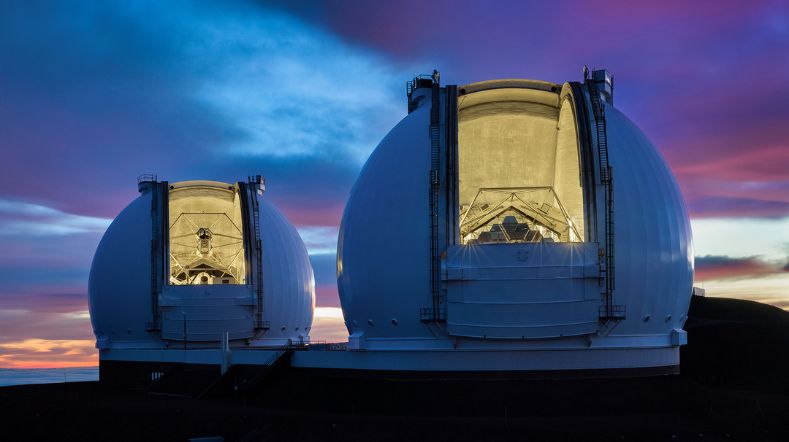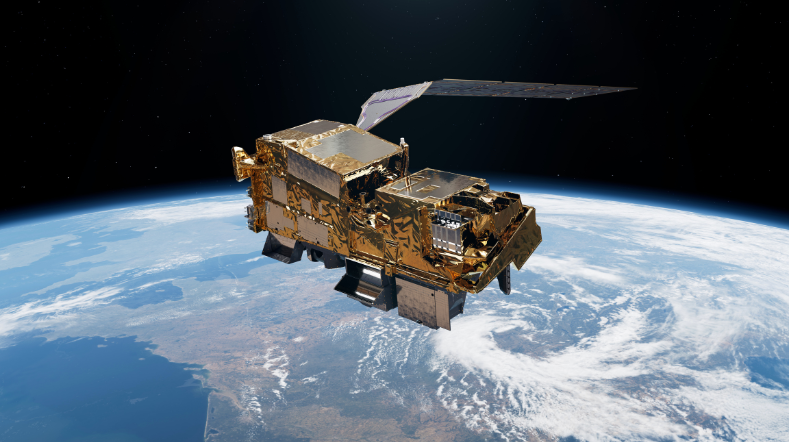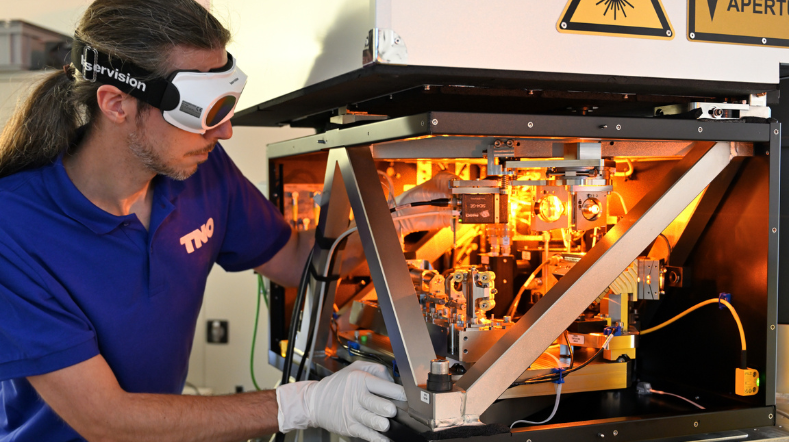Satellite instrument OMI orbits Earth for 100,000th time
This week, the Ozone Monitoring Instrument (OMI) reaches a milestone: 100,000 orbits of Earth. This is extra special because the monitoring instrument was originally designed for a six-year mission after its launch in 2004. OMI has since been monitoring atmospheric emissions and the ozone hole for more than 18 years, which has provided a lot of useful data. This enabled TNO, for instance, to measure the effects of stricter air quality policies in European countries.
'Pioneering work has been done with OMI in the field of monitoring emissions from space. OMI is the "father" of the work we are doing now with TROPOMI. And the "grandfather" of what we’ll take to the next level again with the future TANGO instrument. This makes OMI an important building block for our climate and air pollution monitoring research.'

Dutch-Finnish collaboration
OMI detects, among other things, ozone, nitrogen dioxide and aerosols (small dust particles such as sand and soot) in the lower five kilometres of the atmosphere. The instrument was developed by the Netherlands and Finland. OMI was built by Airbus Defense and Space Netherlands and TNO, with TNO responsible for the design and realisation of essential optical systems at the heart of the instrument. The project is under the scientific direction of KNMI in collaboration with scientists from NASA and the Finnish Meteorological Institute (FMI).
18 years of measurements
During its 100,000 orbits around the Earth, OMI has taken some 9 billion measurements. The distance OMI has travelled corresponds to almost 30 times the Earth's distance from the sun. OMI measurements are used by scientists around the world. For example, OMI is used to monitor the ozone hole over the South Pole. OMI is also used to measure air quality in Europe.
Measuring emissions
TNO, for instance, used OMI data to measure the effects of stricter policies on air quality in several European countries. Here we looked at the substance sulphur dioxide released by shipping, refineries and industry. TNO research compared reported emissions over the 2005-2015 period with OMI measurements. This showed that in some countries emissions did indeed go down due to stricter policies, but in some countries, emissions remained high despite reported reductions. Images like this help with providing an independent test of policies.
Next generation measurement instruments
OMI has laid the foundation for the next-generation measurement instruments developed in the Netherlands in collaboration with partners such as Airbus Defense & Space Netherlands, KNMI and SRON. Tropomi, the successor to OMI, was launched in 2017 and builds on the success of OMI. Tropomi has higher accuracy and can measure more gases including the greenhouse gas methane. Meanwhile, work is already underway on the next mission, TANGO. This mission is intended to support the independent verification of emissions for the Paris climate agreement. This mission will offer many new possibilities, such as measuring CO2, measuring in spatial detail from just hundreds of metres, and measuring plant-level emissions from just hundreds - things that are not possible with TROPOMI and OMI.
The OMI project is funded by the Netherlands Space Office, with contributions from the Ministries of Infrastructure and Waterways (I&W) and Economic Affairs and Climate (EZK).

Get inspired
TNO to design adaptive secondary mirror for Keck Observatory


Sentinel-5: ultra-precise satellite data for a healthier future


Optics


Time setter story: Max van Strien


TNO technology selected for Secondary Mirror of W. M. Keck Observatory


